Drumheller: Canada's tiny town of huge monsters
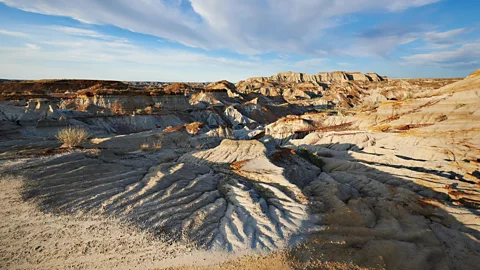 Simon Urwin
Simon UrwinDrumheller in the Badlands of Alberta, Canada, is the self-proclaimed "World Capital of Dinosaurs". That's because it's home to some of the most important fossil discoveries ever made.
Alberta, Canada, is home to the largest deposits of dinosaur fossils on Earth, and Drumheller – located 280km south of the provincial capital Edmonton – is its epicentre. The small town (population: 7,968) is the self-pronounced "World Capital of Dinosaurs"
Here, in this extraordinary badlands topography, dinosaur bones are commonly seen poking out of the earth and some of the region's most astonishing discoveries are showcased in the Royal Tyrrell Museum of Palaeontology, a globally recognised natural history museum and research centre that attracts more than 430,000 visitors annually.
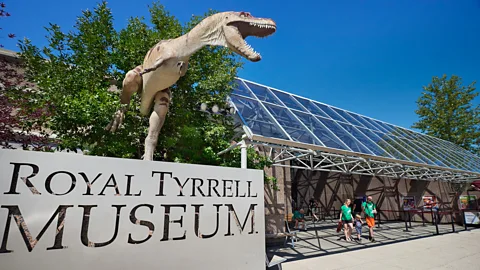 Simon Urwin
Simon Urwin"The reason this area is so rich in dinosaur discoveries is because 75 million years ago it looked entirely different to the badlands terrain you see now," said Dr Jim Gardner, a palaeontologist at the Royal Tyrrell who specialises in prehistoric amphibians and reptiles. "It was once a semi-tropical coastal plain with the ideal conditions for life to flourish, especially dinosaurs that could feast on the plethora of plant life and creatures such as crocodiles, pterosaurs (flying reptiles), and, of course, other dinosaurs."
 Simon Urwin
Simon UrwinThe conditions were also perfect for preserving the dinosaurs after death: seasonal storms and floods killed them in large numbers, then quickly buried their corpses under large quantities of sediment. "Water was key in this wonderfully fortuitous cycle of events," explained Gardner. "It helped create life, brought about death, buried the dinosaur remains in the perfect conditions for preservation, then set fossilisation in motion. Alberta is the world's leading dinosaur hotspot as a result."
 Simon Urwin
Simon UrwinWater also played a key role in revealing the fossils. During the Ice Age (approximately 25,000-40,000 years ago), thick sheets of ice carved away much of the younger sedimentary rock. Then, as the climate warmed, torrents of meltwater were unleashed from glaciers more than 1km thick, creating new river valleys. "The process was like pulling back the theatre curtain," said Gardner. "Ta-dah! Here are all these dinosaur fossils in the rock face. The erosion still continues to this day, so every year, a couple of millimetres of rock are lost and new fossils are found."
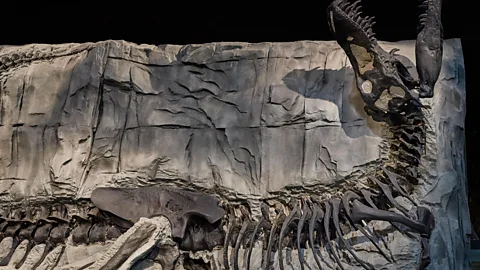 Simon Urwin
Simon UrwinRiver erosion has led to some exceptional discoveries, including one of the stars of the museum, the Tyrannosaurus rex "Black Beauty", which was found by chance by two schoolboys fishing in the Crowsnest River. (Its distinctive black bones are thought to be a result of manganese in the groundwater when it fossilised.) One of the best-preserved T-Rex skeletons ever discovered in Alberta, its skull measures 1.3m long and around 1m wide at the jaw, but as a sub-adult (the dinosaur equivalent of a teenager) it is considered small by T-Rex standards.
 Simon Urwin
Simon UrwinLess than 1% of the museum's three million individually catalogued specimens are on public display, the rest are housed in collection rooms and warehouses. One of the most important finds stored there is an ornithomimosaur (bird-mimic lizard), fossilised in a death pose. "When it was studied by our researchers, they found it had little black marks on the forelimb bones which were the attachment points of quills," said Gardner. "These can also be seen on modern-day birds. So, here was the first hard evidence that this dinosaur group had feathers."
 Simon Urwin
Simon UrwinProtected in jackets of plaster and burlap, some 3,000-5,000 specimens arrive at the museum every year, the largest of which have to be transferred from field digs by helicopter. "Even the smallest of pieces are considered precious and vital for research," said Rhian Russell, a palaeontological conservationist who works in the collections department. "A tiny piece of bone can have teeth marks on it. From this alone, the lab scientists can deduce important new information such as which species were prey for other dinosaurs."
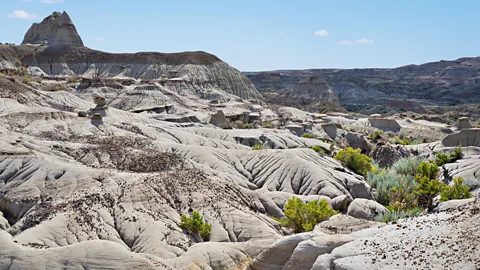 Simon Urwin
Simon UrwinMany of the museum's greatest specimens were unearthed in Dinosaur Provincial Park, a Unesco World Heritage site located 170km south-east of Drumheller. "Most date back to the late Cretaceous period, about 10 million years before the mass extinction of dinosaurs," said Amber Whitebone, a palaeontologist-guide at the park. "Nowhere else on Earth can match the number and quality of specimens we have found here, which include more than 50 dinosaur species, 150 complete skeletons and 450 different fossilised organisms."
 Simon Urwin
Simon UrwinThe park attracts more than 100,000 visitors annually. One of the most popular guided tourist treks is to a vast dinosaur bone bed that covers an area the size of two football pitches and is the resting place of a herd of horned Centrosaurus, a relative of Triceratops. "The herd was more than 1,000 strong," said Whitebone. "Based on how their bones lie, it's believed they panicked and drowned while trying to cross a swollen river."
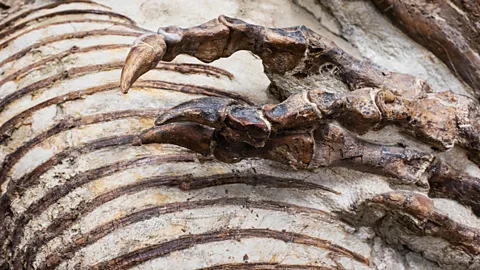 Simon Urwin
Simon UrwinDinosaur fossils were first found in Alberta by the Blackfoot First Nations, who considered them not dinosaurs, but "grandfathers of the bison", their most sacred animal. French trappers then arrived on the Red Deer River (which runs through Dinosaur Provincial Park) in search of beaver pelts to send to Europe, where they were in high demand to make top hats. "They traded with the Blackfoot people who told them of the treasures in the ground," said Whitebone. "Word spread, and by the early 1900s the Great Canadian Dinosaur Rush was underway."
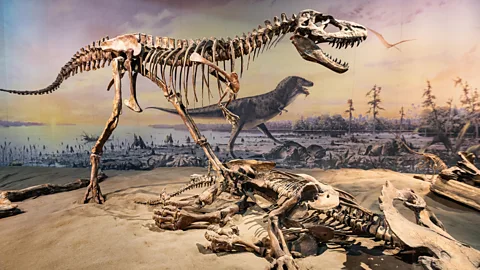 Simon Urwin
Simon UrwinMore than a century after the first fossil-hunting expeditions took place in Alberta, the fascination with dinosaurs shows no sign of abating. For Gardner, their study is vital to understanding the future. "We live on a dynamic planet that is prone to extinction events," he said. "We know life rebounds, but it's not the major players who once dominated that are still around afterwards. Humans are now the apex predator on a planet witnessing unprecedented change. What happened to the dinosaurs should be a cautionary tale for us all."
BBC Travel's In Pictures is a series that highlights stunning images from around the globe.
---
Join more than three million BBC Travel fans by liking us on Facebook, or follow us on Twitter and Instagram.
If you liked this story, sign up for The Essential List newsletter – a handpicked selection of features, videos and can't-miss news delivered to your inbox every Friday.
